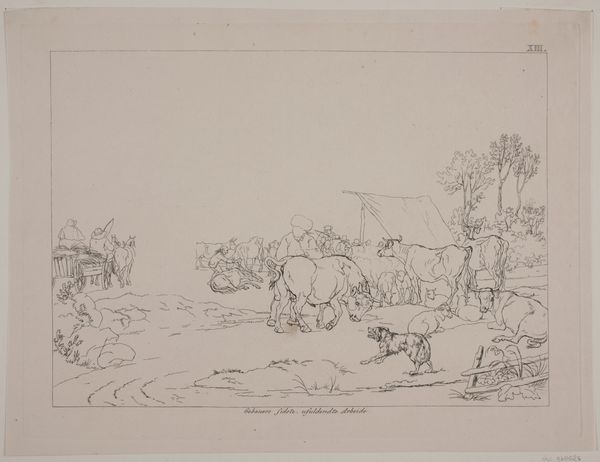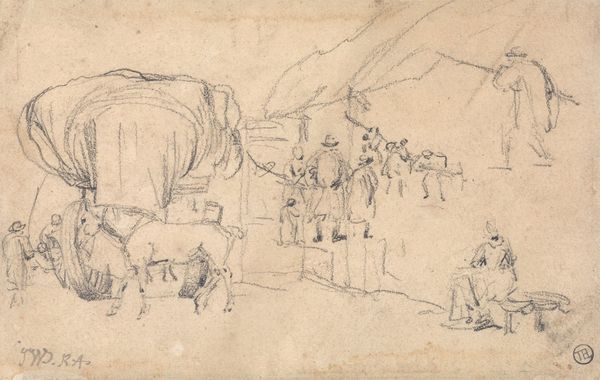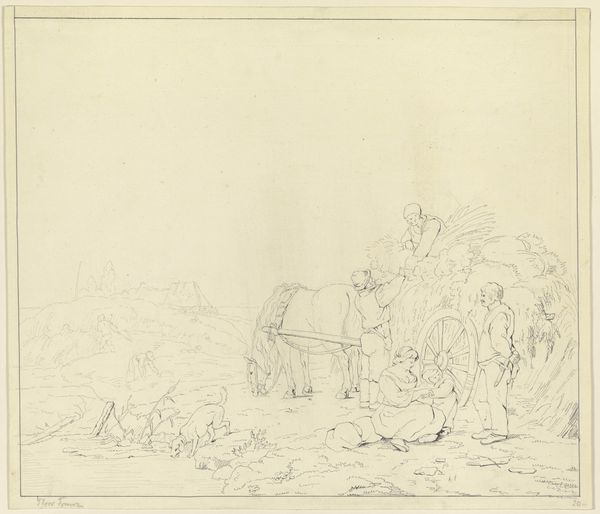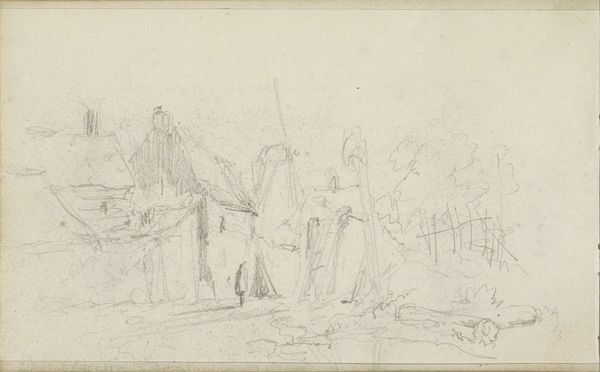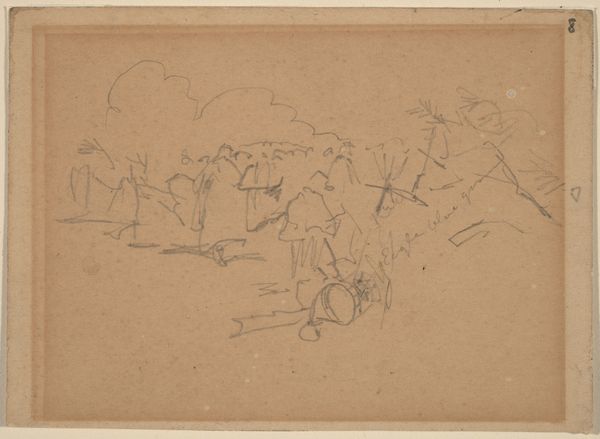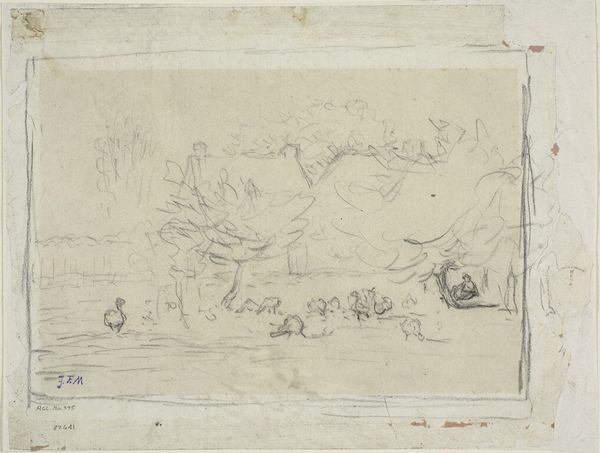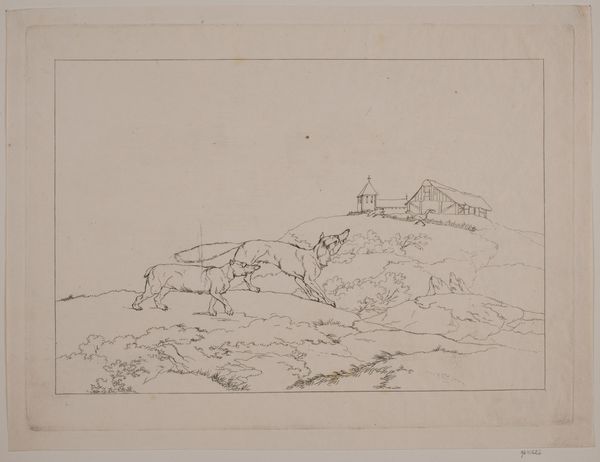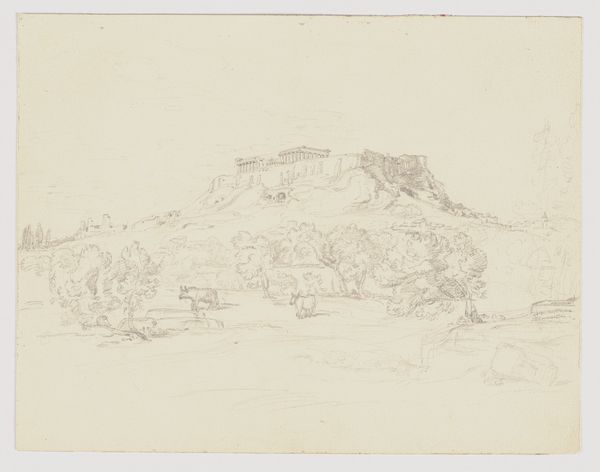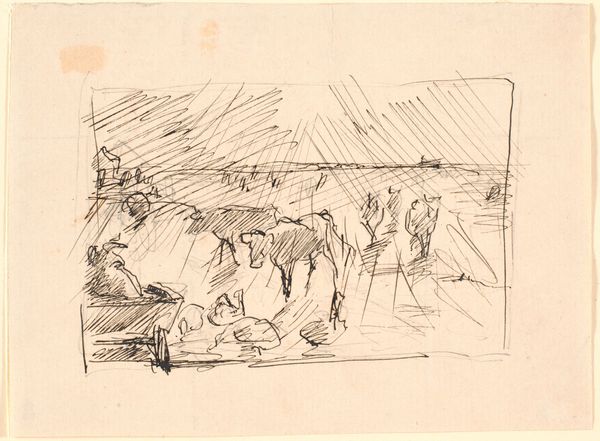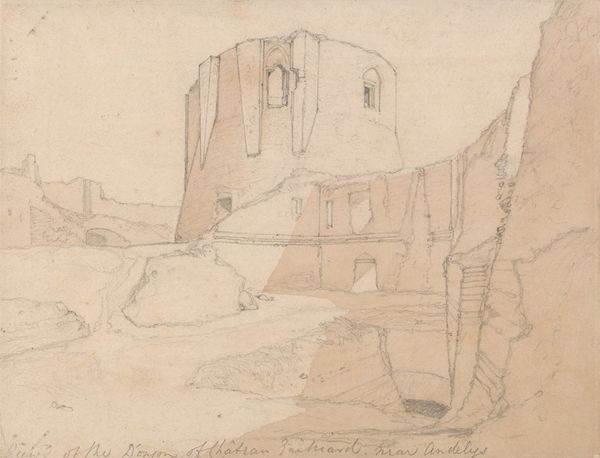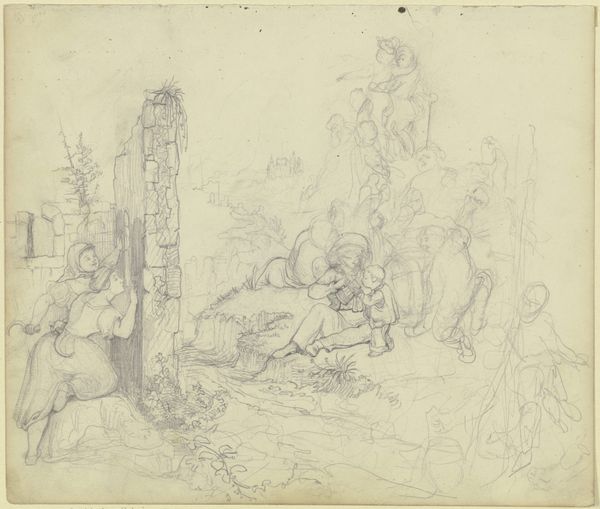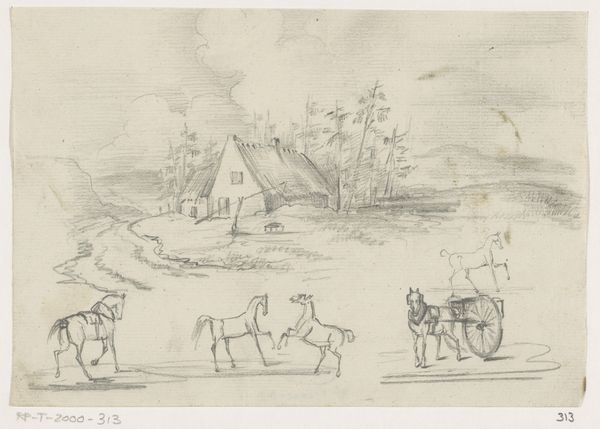
drawing
#
drawing
#
landscape
#
line
Dimensions: sheet: 16.5 x 22.3 cm (6 1/2 x 8 3/4 in.)
Copyright: National Gallery of Art: CC0 1.0
Curator: Robert Caney's drawing, "Incantation Scene from 'Der Freischütz'," offers a glimpse into set design through a stark landscape defined by linear hatching. The sketch on paper exudes a nervous energy. Editor: The energy you speak of really strikes me. These fractured, looming shapes convey such anxiety, almost dread, without any human presence actually depicted. Are we meant to interpret this setting as haunted? Curator: It's intriguing that you latch onto "haunted," given the opera's narrative, where magic and mortal anxieties collide. Caney’s rapid lines—forming what look like trees, rock formations—establish a visually disruptive, albeit controlled, framework for the drama's supernatural elements. The diagonal slashes particularly enhance the dynamic contrast against the gentler, curving foliage overhead. Editor: Indeed. Considering Caney's landscape rendition, notice how the sketchy, angular rocks jutting upwards become almost symbolic—a visual language for the opera's exploration of human-versus-nature motifs. I can't help but feel that the landscape almost becomes another character in the play, reflecting internal struggles via external, raw nature. Curator: From a structural perspective, observe the placement of these so-called rock 'characters', framing the presumed stage's depth. Notice how the bridge implied atop the rocks directs one’s perspective back—visually controlling, and mirroring how opera staging could amplify thematic undercurrents. Semiotically, the 'bridge' suggests crossings and transitions, amplifying thematic turning points. Editor: To pull a thread of thematic resonance here: crossings or portals, maybe? Since incantation invokes conjuring forces, I consider the broader tradition, from folk practices onward. Ritual grounds carry symbolic gravitas tied to collective understanding; is Caney's stark landscape simply scenic, or actively echoing cultural mythos through visual means? Curator: One could consider that interpretation justified, viewing form aligning intrinsically alongside theme... But for Caney's "Incantation Scene", I remain focused more acutely toward internal composition here. Still, both analyses open distinct avenues towards grasping intent via image's intrinsic values nonetheless, would you concede that, too? Editor: Absolutely; it enriches the conversation! Seeing it interpreted structurally, along with its potential for potent symbolism offers layers to appreciate, really enriching it, yes!
Comments
No comments
Be the first to comment and join the conversation on the ultimate creative platform.
